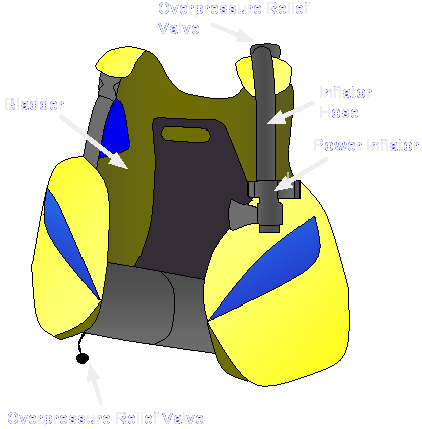Buoyancy Control Devices (BCD)

Essential BCD Features
Several features are required to ensure the function and safety of a BC.
Buoyancy adjustments are achieved by inflating and deflating an air bladder. This bladder must be made of a durable material to prevent punctures or premature failure.
One or more overpressure relief valves must be present. These vent excessive pressure to prevent rupturing or over-inflation. Most overpressure relief valves have knobs attached to them to allow manual venting as well. For this reason, they are sometimes referred to as "dump valves."
The power inflator uses air from the diver's cylinder to inflate the BCD, and the air enters the bladder through a flexible inflator hose. Most BCDs have an overpressure relief valve at the base of the inflator hose, and this can be manually vented by pulling the power inflator straight down.
Buoyancy adjustments are achieved by inflating and deflating an air bladder. This bladder must be made of a durable material to prevent punctures or premature failure.
One or more overpressure relief valves must be present. These vent excessive pressure to prevent rupturing or over-inflation. Most overpressure relief valves have knobs attached to them to allow manual venting as well. For this reason, they are sometimes referred to as "dump valves."
The power inflator uses air from the diver's cylinder to inflate the BCD, and the air enters the bladder through a flexible inflator hose. Most BCDs have an overpressure relief valve at the base of the inflator hose, and this can be manually vented by pulling the power inflator straight down.



